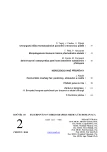Semiinvasive lateral subtalar aproach for osteosynthesis of calcaneal fractures
Authors:
Martin Carda; Martin Pompach
Authors‘ workplace:
Department of Trauma Surgery, Clinic of Surgery, Regional Hospital of Pardubice
; Oddělení úrazové chirurgie chirurgické kliniky, Pardubická krajská nemocnice, a. s.
Published in:
Úraz chir. 18., 2010, č.2
Overview
AIM:
A wide spectrum of approaches to the management of calcaneal fractures have already been defined. A conservative approach, which brings unsatisfactory outcomes with dislocated fractures, percutaneous techniques with a limited possibility of anatomic reposition, and a technique of open reposition using an extended lateral approach, which is considered to be the golden standard of today. This method is associated with a risk of complications during the healing process of soft tissues. The aim of the authors was to test a subtalar approach and to find out, whether it is possible to achieve a good reposition and satisfactory fixation results with a low percentage of complications.
MATERIALS AND METHODS:
The authors treated a total number of 65 calcaneal fractures from 2007 to 2009; 8 of them with the conservative treatment, 35 with percutaneous osteosynthesis and 22 of them semiinvasively. During the semiinvasive approach, the authors carry out an open reposition of fragments of the dorsal facete at the level of subtalar joint from an opening cut on the lateral side of the leg, fixing the fragments with transversally inserted screws to the sustentacular fragment. Finally, percutaneously inserted screws in the long axis of the leg unite the tuberosity fragment with processus anterior and with the posterior joint surface.
RESULTS:
The authors compared the outcomes and the incidence of complications of the percutaneous and semiinvasive methods. No deep infec-tion was reported in either of the groups, surface dehiscence of the surgical wound was reported in 6 % of the patients treated with the percutaneous method and in 9 % of the patients treated semiinvasively. A loss of reposition was noted in 11 % of patients following percutaneous osteosynthesis and in 5 % of the semiinvasively treated patients. Pain on exertion was reported by 35 % of the patients following percutaneous treatment and 14 % of patients treated with the semiinvasive approach.
CONCLUSION:
The authors managed to obtain better results with the semiinvasive approach to the treatment of calcaneal fractures, when compared to percutaneous osteosynthesis. Due to the lower incidence of complications, the authors consider this method to be a good treatment alternative to the treatment with an extended lateral approach, namely for risk patients.
KEY WORDS:
Calcaneal fracture, semiinvasive subtalar approach.
Sources
1. EBRAHEIM, N., A., ELGAFY, H., SABRY, F. et al. Sinus tarsi aproach with trans-articular fixation for displaced intra-articular fractures of the calcaneus. Foot Ankle Int. 2000, 21, 105–113.
2. FOLK, J., W., STARR, A., J., EARLY, J., S. Early wound complications of operative treatment of calcaneus fractures: Analysis of 190 fractures. J Orthop Trauma. 1999, 13, 369–372.
3. GAVLIK, J., M., RAMMELT, S., ZWIPP, H. Percu-taneous, arthroscopically-assisted ostesynthesis of cal-caneus fractures. Arch Orthop Trauma Surg. 2002, 122, 424–428.
4. LEVINE, D., S., HELFET, D., L. An introduction to the minimally invasive osteosynthesis of intra-articu-lar calcaneal fractures. Injury Int J Care Injured. 2001, 32, A51–A54.
5. PARK, I., H., SONG, K., W., SHIN, S., I. et al. Displaced intraarticular calcaneal fracture treated sur-gically with limited posterior incision. Foot Ankle Int, 2000, 21, 195–205.
6. RAK, V., BUČEK, P., IRA, D., MAŠEK, M. Ope-rační metoda léčby nitrokloubních zlomenin patní kosti. Rozhl. Chir. 2006, 85, 311–317.
7. RAMMELT, S., AMLANG, M., BARTHEL, S. et al. Percutaneous Treatment of Less Severe Intraartickular Calcaneal Fracures. Clin Orthop Relat Res. Sympo-sium: Recent Advances in Foot and Ankle Surgery. Published online: 07 July 2009.
8. RAMMELT, S., ZWIPP, H. Calcaneus fractures: facts, controversies and recent developments. Injury Int J Care Injured. 2004, 35, 443–461.
9. STEHLÍK, J., ŠTULÍK, J. Kombinovaná metoda léče-ní dislokovaných zlomenin patní kosti. Acta Chir orthop Traum čech. 2002, 69, 209–218.
10. STEHLÍK, J., ŠTULÍK, J. et al. Zlomeniny patní kosti. 1. vyd. Praha: Galén, 2005. 107 s.
11. WEBER, M., LEHMANN, O., SÄGESSER, D. et al. Limited open reduction and internal fixation of dis-placed intra-articular fractures of the calcaneum. J Bone Joint Surg. 2008, 90-B, 1608–1616.
12. ZEMAN, P., ZEMAN, J., MATĚJKA, J. et al. Střed-nědobé zkušenosti s léčbou zlomenin patní kosti ote-vřenou repozicí a vnitřní fixací kalkaneární LCP z rozšířeného laterálního přístupu. Acta Chir orthop Traum čech. 2008, 75, 457–464.
13. ZWIPP, H., TSCHERNE, H., THERMANN, H. et al. Oteosynthesis of Displaced Intraarticular Fractures of the Calcaneus. Clin Orthop Relat Res. 1993, 290, 76–86.
Labels
Surgery Traumatology Trauma surgeryArticle was published in
Trauma Surgery

2010 Issue 2
- Metamizole vs. Tramadol in Postoperative Analgesia
- Metamizole at a Glance and in Practice – Effective Non-Opioid Analgesic for All Ages
- Metamizole in perioperative treatment in children under 14 years – results of a questionnaire survey from practice
- Safety and Tolerance of Metamizole in Postoperative Analgesia in Children
- Obstacle Called Vasospasm: Which Solution Is Most Effective in Microsurgery and How to Pharmacologically Assist It?
Most read in this issue
- Mechanism of injury of transitional ankle fractures
- Surgical treatment of frontobasal injury with CSF leak-our experience
- Semiinvasive lateral subtalar aproach for osteosynthesis of calcaneal fractures
